Line25 is reader supported. At no cost to you a commission from sponsors may be earned when a purchase is made via links on the site. Learn more
Graphic designers are artists that create visual concepts to captivate audiences, create long-lasting memories and tell stories using typography, color, form and imagery. Even though all graphic designers tend to practice under the same general title, they work in different types of graphic design.
The difference between these types of graphic designers isn’t just in the name. Most often, the principle of the heart of design differentiates the type of graphic designs. As graphic designing operates in different niches, it is important for people who want to pursue this as a career to know all of these types. Though these types of graphic designing overlap, each type requires its own specific set of techniques and design skills. Because the graphic design industry is constantly progressing, as a designer you should be an adaptable learner so that you can change or add special skills throughout your career. So, whether you are an aspiring graphic designer or looking for design services for your company, you should know these 9 types of graphic design:
1. Marketing Graphic Design:
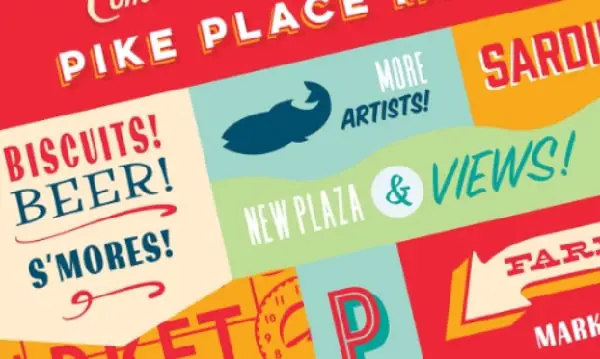
This is the most common type of graphic designing. When people hear the term graphic design, they link it to marketing graphic design. Graphic designers in the advertising and marketing niche combine the principles of design and art with additional information about the psychology of buyers and consumers trends. It doesn’t matter if you work as a freelancer or in an agency. In this type of graphic designing, you will learn about different customer profiles and trends every time you take up a new case. Also, those who work in-house, dive deep into a specific set of information to get to know the work intimately. These types of graphic designers create billboards, advertisements, signs and more. Today, they also design graphics for the web by creating shareable graphics for banners, social profiles, digital brochures, email marketing templates, and other digital content. It is easy to find jobs for such graphic designers as there is always a position for them at agencies. However, the freelancing scenario is very different. So, it is better to work for a company before to develop a great network and start working as a freelancer.
2. Corporate Graphic Design:
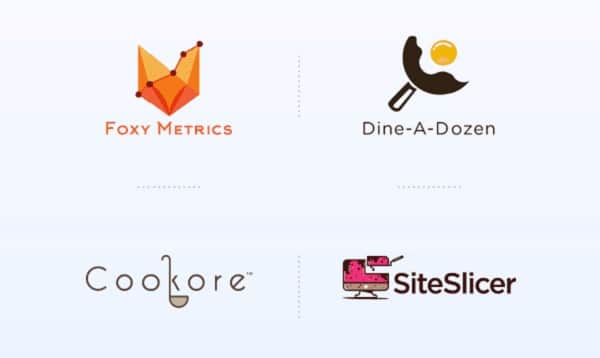
In this type of graphic designing, the designers need to create a strong corporate identity using visual mediums. Their work appears in everything the organization does, including all the digital and print media. If you work in corporate graphic design, you contribute to “house style.” A House Style means organizing design elements in a way that is discrete while also sharing a cohesive, common method. Corporate graphic designers work with logos, typography and company colors. These three aspects should come together to create a unique, strong brand and visual identity. Also, note that a brand identity is not just a random logo. A logo simply communicates the company’s personality and its fundamental values. It also reaches to the customers by linking itself to experience, memories and emotions. Many corporate graphic designers work together with sales and marketing to set outline of the brand’s identity. Corporate graphic designers need to have strong personalities to coordinate between multiple platforms and teams to ensure their work is translated seamlessly within the company. They also require excellent communication, creative and conceptual skills and a passion for researching organizations, trends, industries and competitors.
3. UI Graphic Design:
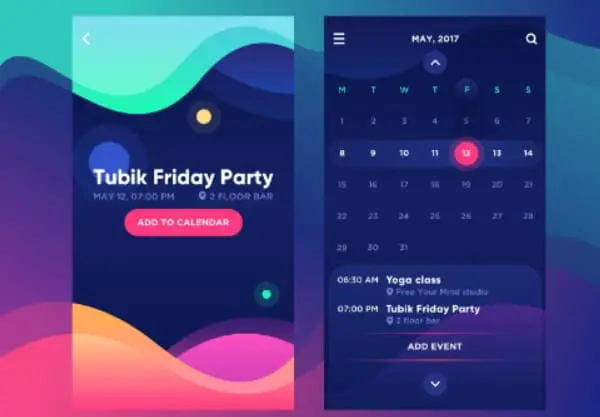
A UI (User Interface) is how a user communicates with the device or application. The UI design is the process of creating interfaces that are easy to use and provide a user-friendly experience. A user interface graphic design includes all things a user communicates with but in terms of graphics. It focuses on the design of the on-screen graphic elements such as menus, micro-interactions, and buttons, along with providing a seamless visual experience to the users. UI graphic designer has to balance the technical functionality with aesthetic appeal. UI designers specialize in mobile apps, games and desktop apps. They work closely with user experience designers that determine how the app works and user interface developers that write the code to make it work. They are responsible for designing web pages, themes, game interfaces and applications. UI designers must have both graphic skills and an excellent understanding of UI/UX principle to provide web development and responsive design. In addition to designing knowledge, they require the knowledge of programming languages such as CSS, HTML and JavaScript. Only if you have proper knowledge of these languages, you can progress as a UI graphic designer.
4. Packaging Graphic Design:

You might have seen some interesting packaging and wondered who designs them. They are designed by graphic designers that work in packaging niche. The packaging of the product says a lot about the product inside it as well. It is the first thing your customer will see when they purchase or receive a product, and first impressions do matter. In today’s world, the packaging is something companies use to stand out. Good packaging design will easily differentiate itself from the other products on the shelf that holds more number of items and hence increase the sales of the product. Additionally, packaging graphic has to meet the exact standard of practicality. Most designs in this field are oddly shaped but are practical and have efficient labels. For this field, you will require out of the box creativity with rational thinking. Packaging graphic designer has to do all this while sticking to the overall design of the brand’s identity to ensure recognizability, continuity and portability between packages. You might face many challenges in this designing because of the functionality. So, you will have to spend most of the time solving the problem and making sure there are balance and flow in the designs.
5. Apparel Graphic Design:
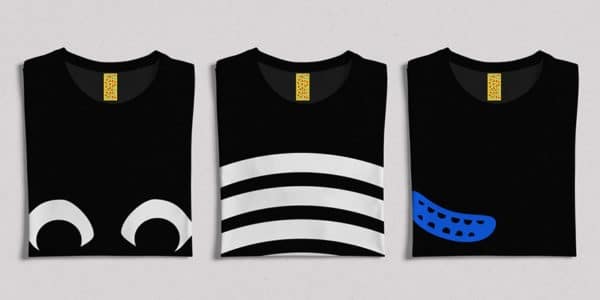
Apparel graphic designers design all the graphic or printed t-shirts that you see in the market today. Apparel designers are responsible for all the functions of textile printing from concept to completion. Designers in this niche work just like others where they start with a simple concept and work their way up to create a final product. Many of them also use a template because of the size restriction in printing apparel. Even a fraction of an inch can create a huge difference in the design, and it shows prominently, especially in clothing. Many people who work in this niche are dependent on the trends of other designers, and they need to work around it to make them stand out. They have to keep an eye on what people are wearing on the runway and the streets to keep oneself updated about the latest trends. While other fields, graphic designers can work on traditional logos and designs for years, clothing changes every season. Failing to keep up with the latest trends means failing to sell your work.
6. Environmental Graphic Design:

Environmental graphic designers visually connect people to places to enhance their overall experience of making spaces more interesting, informative, memorable and easy to navigate. It depends on the principle of wayfinding that refers to the system and information people use to make their way through different spaces. For example, the designs you see in museum exhibitions, Office branding, Retail store interiors, murals, Signage, Stadium branding, public transportation navigation, event and conference spaces are designed by this type of graphic designers. This type of graphic design is a multidisciplinary practice that combines architectural, landscape, interior, industrial, and graphic design. These designers come together with people in these different fields to implement their plan. Because of this, designers in this niche have education about both graphic design and architecture. They are familiar with modern design concepts and can read and create architectural plans. Environmental graphic design has formed static print pieces. However, digital interactive displays continue to be popular as a means of creating an engaging experience. If you want to find these designs, you can see them in places that have evolved to become a modern structure such as hospitals, universities, airports and town centres.
7. Print media and Publication Graphic Design:

Print media and publication graphic designer are the old school designers who work in the world of books, magazines, catalogues, newspapers and tangible print media. These designs are the ones that shape the way a magazine looks. They design both layouts and covers and stick to the area of publishing. For example, magazine designers stick to their area of expertise rather than trying to design a book cover. Publication design includes many components like typography, text, layout, illustrations, and photographs, printing and binding. Magazine design is more than just the front cover. It requires a lot of detailed work to put together a look that appeals to the customers. Print work dives deep into style, font and paragraph size for readability and visual appeal. It also includes kerning (space between letter and character) and leading (space between lines). Titles and headers get extra attention, and everything gets structured against white space. Additionally, poor printing and binding can make the best designs look messy and unorganized. The difference between the big publications and small magazine companies is usually the type of printing and trimming they use.
8. Motion Graphic Design:

Motion graphic designers are designers in motion. This includes audio, video, imagery, typography, animation, and other effects used in TV, film and online media. The popularity of this field has increased over the recent years as technology improved, video content became superior. This is the new speciality of graphic designers, formally reserved for film and TV. As technology has advanced the production time and cost has reduced, making the art form more affordable and accessible. Now they can be found everywhere on digital platforms that have created all sorts of new opportunities and areas. Motion graphic designers create Presentations, Promotional videos, Websites, Title sequences and end credits, Trailers, Video games, Banners, Tutorial videos, GIFs, advertisements, and animated logos. They begin by developing storyboards and bring their concepts to life with video, traditional art, and animation. Depending on the industry, graphic designers in this field require a strong knowledge of coding, 3D modelling, and marketing can be definite assets. Hence, you require several digital skills to advance your career in this niche of graphic designing.
9. Vehicle Wrap Graphic Design:
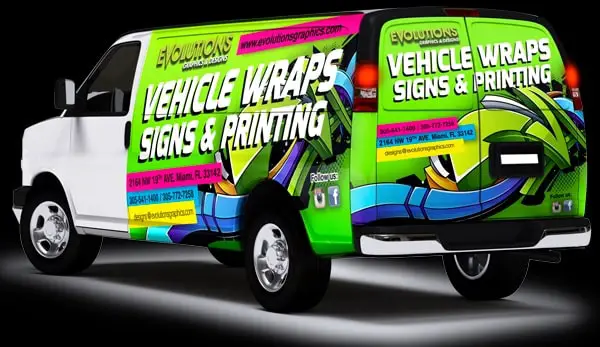
Most common but unknown type of graphic design is automotive such as vehicle wraps or vehicle advertising. Both small and large businesses rely on this type of marketing, as it is very cost-effective. Vehicle wraps have a visually simple design. That is because people don’t have much time to stop and look on the vehicle for 10 minutes to understand the ad. Many wraps contain a few large texts (main content) as well as simple graphics linked to the company’s logo. Everything has to be well-coordinated from color to the font of the design. Designers who work in this niche specialize in minimalistic but effective designing. They have to work with accurate templates along with millimetre measurements of the size of the vehicle. The files are incredibly complex and large, and so any changes cost a lot to the company. These projects are one of the most challenging ones. However, they are some of the largest and fast-moving designs in the world of graphic designing. You need the knowledge of the structure of automobiles along with basic graphic designing skills.
So now you know that graphic designing is more than just designing logos and letterheads. It’s a professional you see everywhere but fail to recognize it. It is an ever-growing field, and the requirement for skilled and specialized designers is increasing day by day. The different types of a graphic design need more than just printing a product on a surface. They all come with varying hierarchies of design and principles that manage the whole process from concept to creation. Along with necessary designing skills, graphic designers need to solve problems and communicate their visuals in different forms from digital to print media to practical usage.
